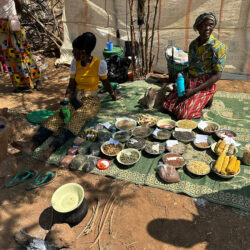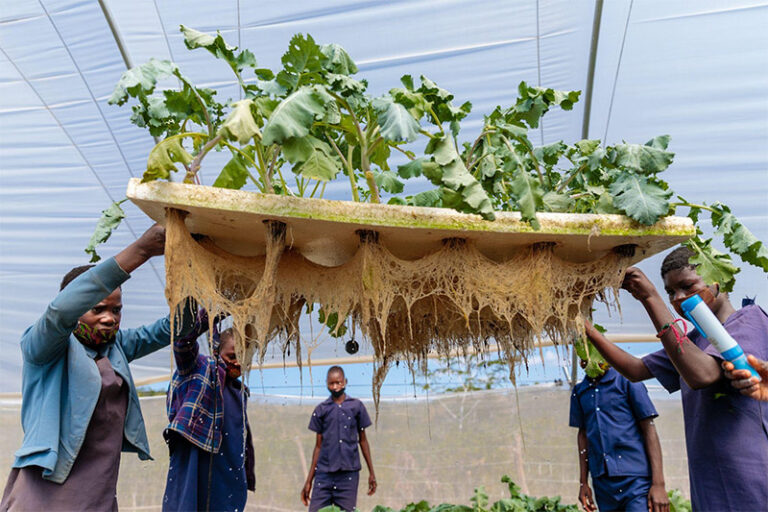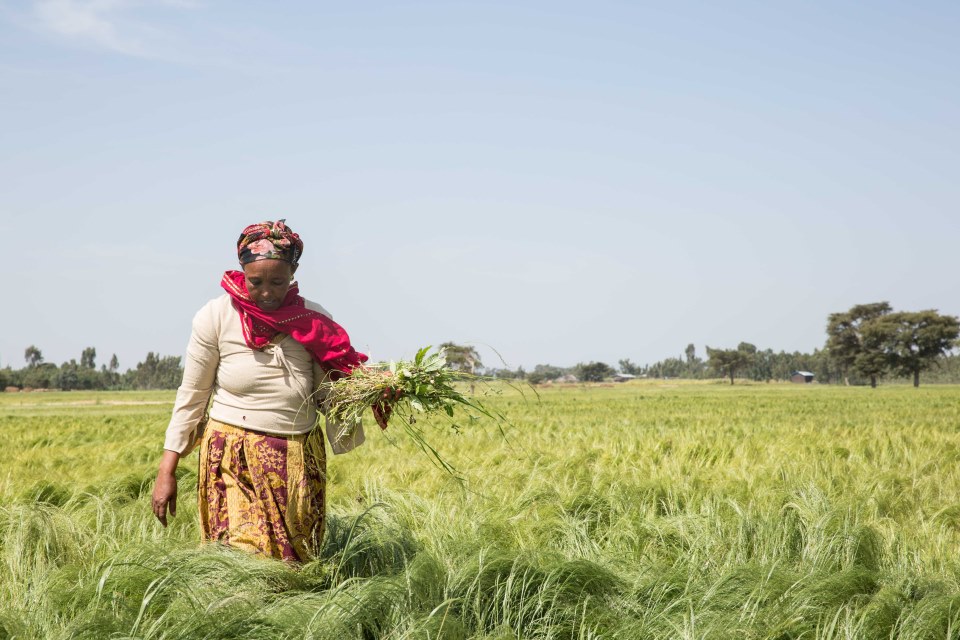A Window of Opportunity Not to be Missed: Investing in Adolescent Girls
Blog by Rita Bhatia, GCNF Senior Advisor, Nutrition
The first 1,000 days of life are a critical window of opportunity in a child’s development. However, we cannot forget the child between day 1,001 (age 2) and when the child reaches adulthood at about day 8,000, or 21 years of age.
Adolescence presents a window of opportunity that is too often neglected: as a child becomes an adolescent (roughly between 10-14 years of age), they experience a period of physical, cognitive, emotional, and social development that is as significant as their first 1,000 days.
Despite this important developmental time frame, many health and nutrition programs focus only on the first 1,000 days and many school nutrition programs focus only on primary school students. By supporting the health and well-being of adolescents through programs such as school meals, these students and their communities will reap the benefits for years to come.

Adolescence presents a window of opportunity that is too often neglected: as a child becomes an adolescent (roughly between 10-14 years of age), they experience a period of physical, cognitive, emotional, and social development that is as significant as their first 1,000 days.
Despite this important developmental time frame, many health and nutrition programs focus only on the first 1,000 days and many school nutrition programs focus only on primary school students. By supporting the health and well-being of adolescents through programs such as school meals, these students and their communities will reap the benefits for years to come.
Targeting Adolescent Girls and Young Women
Adolescent girls and young women stand to gain the most from a stronger focus on the first 8,000 days of life. However, in many cultures around the world,women and girls often eat last and eat least, affecting both their short and long-term health. This has intergenerational consequences as healthy, educated women are not only better mothers but also contribute more to their households and communities.
Some countries have developed innovative schemes to support adolescent girls. For example, in India, a holistic initiative known as Kishori Shakti Yojana (KSY), or the Adolescent Power Scheme, was launched in 2007 to empower out-of-school girls ages 11-18 by providing nutritious food and complementary services such as health check-ups, Iron and Folic Acid (IFA) supplementation, and life skills education.
School Meals as the Vehicle
Adequate nutrition during adolescence is essential for physical and cognitive development, and school meals can contribute significantly to meeting the nutritional needs of adolescents. School meal programs can also help reduce disparities among students, promote healthy eating habits, and impart nutrition education.
Proper nutrition has an impact on students’ academic performance, concentration, and cognitive functions. Those who have access to nutritious meals at school are more likely to perform well in their studies. In adulthood, when they are parents themselves, they are also more likely to value and support the education, health, and nutrition of their own children.
School feeding programs are also a powerful and well-documented incentive for families to send children to school. The longer a child remains in school, the higher the benefits to the individual and to society. In the case of girls, evidence demonstrates that girls who attend school have a lower risk of early marriage and early pregnancy. When girls have access to nutrition and basic health and hygiene support, they are also more likely to achieve higher levels of education and become more productive adults.
Primary school enrolment rates are quite high in most countries, but drop-out rates significantly increase as children get older, particularly for adolescent girls. School feeding programs play an important role in helping to keep girls in school through adolescence. However, there is currently a gap in reaching older children through school feeding. According to the Global Child Nutrition Foundation’s 2021 Global Survey of School Meal Programs, only 40% of school feeding programs globally serve secondary schools, compared to 95% at the primary level, with some focusing solely on lower primary students.

(2021 Global Survey of School Meal Programs© report, Section 3, Table 4, pg. 24)
Adolescent girls are particularly vulnerable to micronutrient deficiencies, especially iron-deficiency anemia. School meal programs can effectively provide iron-rich and fortified foods to combat this, alongside essential nutrients like calcium, Vitamin D, and folate, which address other deficiencies. Adequate nutrition also supports the menstrual health of adolescent girls. School meals can help meet increased nutritional demands brought on by puberty, and are particularly effective when provided in conjunction with private and gender-segregated bathroom facilities and complementary menstrual hygiene management education and supplies .
A Call to Action
We therefore call on countries and their partners to invest in school feeding for upper primary and secondary school students as an incentive for families to support girls’ education through adolescence.
In seizing this critical window of opportunity, investing in the well-being of adolescent girls emerges as an imperative stride toward holistic societal advancement. The significance of this phase, often overlooked in the shadow of early childhood interventions, cannot be overstated. As we advocate for health and nutrition programs that extend beyond infancy, it is crucial to shine a spotlight on adolescent girls and young women who stand poised to both gain and contribute the most from a robust focus on the first 8,000 days of their lives.
Leveraging school meal programs, coupled with comprehensive health and education strategies, not only addresses immediate concerns like micronutrient deficiencies but also serves as a catalyst for breaking cycles of early marriage, early pregnancy, illiteracy, poor health, and intergenerational poverty. By nurturing the well-being of adolescent girls today, we forge a path towards resilient, educated, and empowered communities that will reap the dividends of this sustained investment for generations to come.
About the Author:
Rita Bhatia is a GCNF Senior Advisor for Nutrition based in India with extensive experience in managing public health nutrition programs. She has worked with NGOs and UN agencies, focusing on food security, nutrition, education, and HIV/AIDS. Her expertise includes program design, management, and evaluation. Rita is passionate about mentoring young professionals and has led nutrition training globally. She holds master’s degrees in Nutrition (India) and Social Development (University of Wales, UK).













No comment yet, add your voice below!